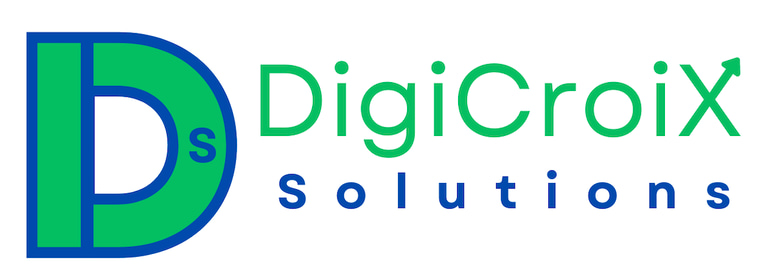Ads Healthcare Organizations Use to Retain Patients
Discover ads healthcare techniques not just for acquisition but also patient retention and re-engagement. We cover follow-up campaigns and loyalty offers. Book your call to set up patient lifecycle ads.
Vishwa Raval
10/5/20255 min read


Understanding Patient Retention in Healthcare
Patient retention refers to the ability of healthcare organizations to keep their patients engaged with their services over time. This concept is crucial in today's healthcare landscape, where maintaining a loyal patient base directly impacts operational efficiency and financial performance. A high retention rate signifies patient satisfaction, trust, and the effectiveness of healthcare delivery, whereas low retention can lead to significant economic challenges.
The financial implications of losing patients are substantial. Healthcare organizations incur considerable costs associated with acquiring new patients, including marketing expenses and operational overheads. Additionally, the disruption caused by patient turnover can detract from the quality of care delivered, which in turn may exacerbate patient dissatisfaction and inflate churn rates. Consequently, understanding the factors that influence patient retention becomes imperative for healthcare providers aiming to enhance their service delivery and profit margins.
Engagement is a critical component of effective patient retention strategies. Many healthcare organizations face challenges in maintaining ongoing communication and connection with patients, which can lead to disengagement. Issues such as scheduling difficulties, lack of follow-up care, and inadequate patient education contribute to patients feeling undervalued or unappreciated. When patients do not perceive the value of continual engagement with their healthcare providers, the likelihood of them seeking care elsewhere increases significantly.
Furthermore, an analysis of patient demographics reveals that younger patients may seek diverse healthcare options, valuing flexibility and accessibility in their care. As a result, healthcare organizations must adapt by implementing tailored approaches that resonate well with different age groups and patient preferences. By addressing these challenges and understanding the intricacies of patient engagement, healthcare providers can design effective advertising strategies aimed explicitly at improving retention rates, ensuring longevity in their patient relationships.
Key Advertising Techniques for Patient Retention
Healthcare organizations are increasingly recognizing the importance of effective advertising techniques for retaining patients. A central strategy in this regard is the implementation of follow-up campaigns, which serve to engage patients after their initial appointments. These campaigns can take various forms, including emails, phone calls, or text messages, all aimed at checking on the patient’s progress and encouraging their return for future visits. For instance, a clinic may send out a personalized email to patients who have recently undergone a procedure, asking about their recovery and reminding them of any upcoming follow-up appointments.
Personalized communications also play a crucial role in patient retention strategies. By addressing patients by their names and referencing their specific health concerns or treatment journeys, healthcare providers can create a more meaningful connection. For example, a family practice might send tailored newsletters offering health tips relevant to specific age groups or medical conditions. Such targeted communication not only enhances patients' experience but fosters loyalty as individuals feel recognized and valued within the healthcare system.
Moreover, targeted offers can serve as effective incentives for encouraging patients to return. Healthcare organizations might use patient data to identify trends and offer promotions or services that meet specific needs. For instance, a dental practice may provide promotional rates on teeth whitening services to patients who have not visited in several months. Such strategic offers can motivate patients to book appointments and engage with the healthcare provider more frequently.
Successful examples abound: for instance, a hospital that implemented a comprehensive follow-up strategy reported a noticeable increase in return visits. Another facility utilized personalized health tips sent via text to patients, resulting in a significant uptick in appointment bookings. These strategies not only enhance patient retention but also foster a culture of care that ultimately benefits both the patient and the healthcare organization.
Building Loyalty Programs and Offers
In the highly competitive healthcare industry, retaining patients is crucial for organizational growth and stability. One effective strategy that healthcare organizations are adopting is the design and implementation of loyalty programs and special offers tailored to their patients' needs. These programs can enhance patient experience while promoting engagement and satisfaction. By providing incentives that appeal to patients, healthcare providers can build a loyal patient base that boosts both retention rates and overall organizational success.
Loyalty programs often include rewards for returning patients, such as discounts on services, priority bookings, and personalized health reminders. These incentives not only encourage repeat visits but also create a sense of appreciation among patients, which reinforces their connection to the healthcare provider. For instance, a dental clinic may implement a program where patients earn points for each visit, which can later be redeemed for free services or discounts on treatments. This kind of offer resonates well with patients, resulting in increased visitation and improved retention rates.
Moreover, successful case studies demonstrate the effectiveness of these strategies in enhancing patient loyalty. For example, a healthcare organization may introduce a referral program, where existing patients receive rewards for bringing in new patients. This not only incentivizes current patients but also expands the organization’s reach within the community. Another example includes a hospital that offered health packages at discounted rates for long-term patients, effectively creating a sense of exclusivity and loyalty.
By analyzing these successful models, healthcare organizations can tailor their loyalty programs to fit their unique patient demographics and preferences. It is essential to consider factors such as convenience, accessibility, and the specific needs of the patient population, ensuring that loyalty programs are not only appealing but also beneficial. Through careful planning and effective advertising of these programs, healthcare organizations can foster a strong sense of loyalty among their patients, ultimately leading to sustained relationships and increased patient satisfaction.
Setting Up Your Patient Lifecycle Ads
To effectively enhance patient retention and re-engagement through advertising, healthcare organizations must adopt a systematic approach to setting up their patient lifecycle ads. A key first step is segmenting the patient population. By categorizing patients based on demographics, health conditions, and past interactions with the healthcare provider, organizations can tailor their messaging to meet the specific needs and concerns of each group. For example, a campaign targeted at younger patients may focus on preventive care, while messaging for older patients may highlight chronic disease management options. Using data analytics tools can assist in identifying these segments efficiently.
Once the patient population is segmented, it is essential to craft targeted messages that resonate with each group. The messaging should be clear, informative, and aligned with the patients' needs. For instance, if the goal is to encourage follow-up visits, the campaign could include reminders about the importance of these appointments, alongside offering incentives such as discounts on services for timely attendance. Additionally, utilizing various channels such as email, social media, and direct mail can help reach patients where they are most likely to engage with the content.
Equally important is measuring the impact of these campaigns on patient retention and engagement. Organizations should establish key performance indicators (KPIs) that reflect their objectives, such as the rate of appointment bookings, patient feedback, and overall engagement metrics. Regularly reviewing these metrics allows for adjustments in strategy, ensuring that the campaigns remain effective and responsive to the needs of the patient population. By integrating these actionable strategies into patient lifecycle management, healthcare organizations can create a robust framework that not only retains patients but also fosters a lasting relationship with them.
Get in Touch
Book your free consultation today and let's create a strategy to elevate your success!


Address
94 Shree Nagar Apartment, Sola Road, Naranpura, Ahmedabad, Gujarat, India 380063
6706 Fulton Avenue, Burnaby, BC, Canada V5E 3H1
Phone
+91 88497 12474
Quick Links
© 2025. All rights reserved.
Useful Links
Engagement
Subscribe
+91 88497 12474
